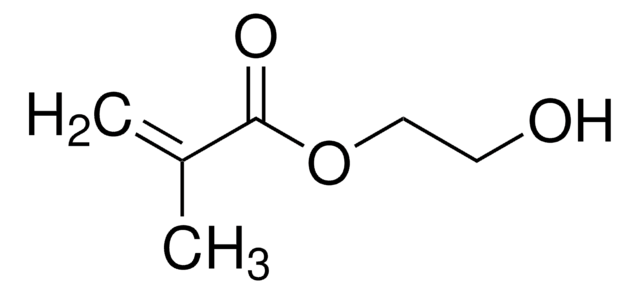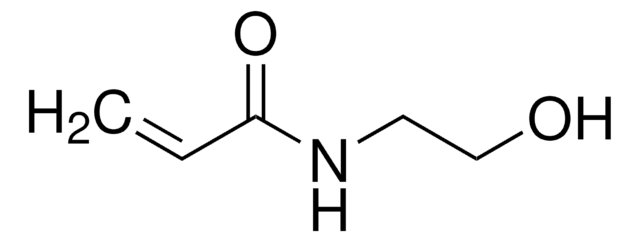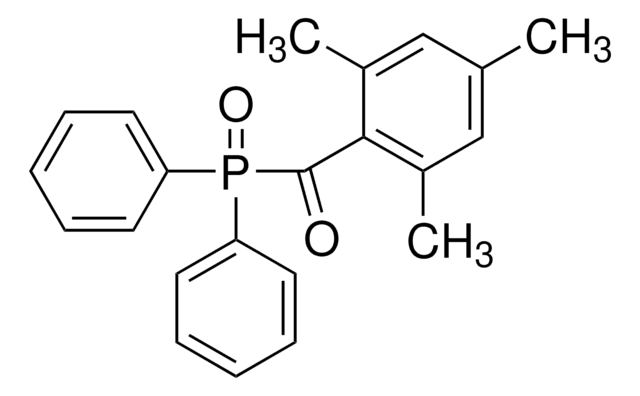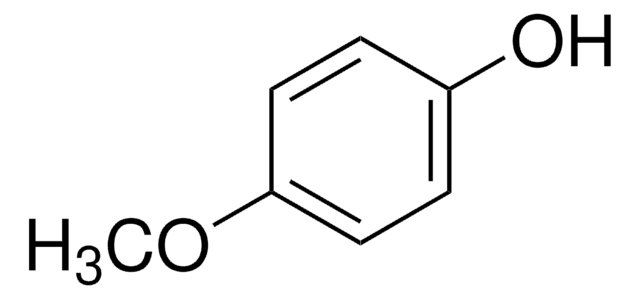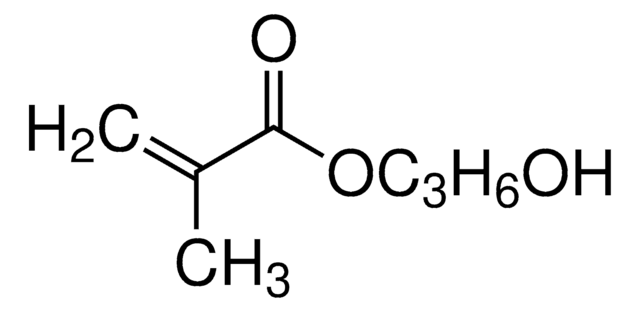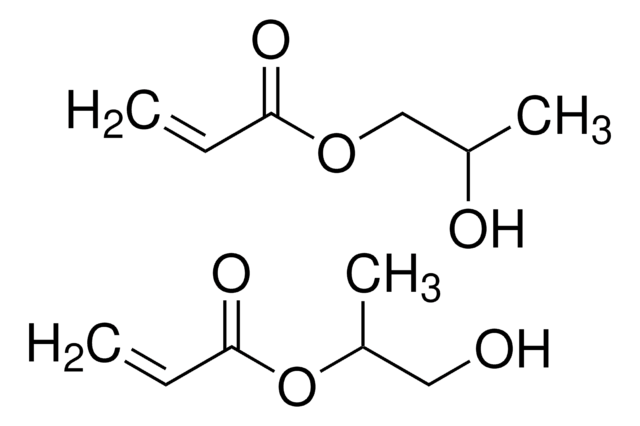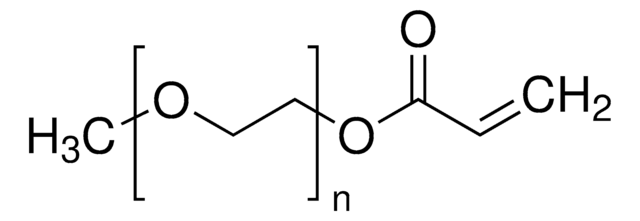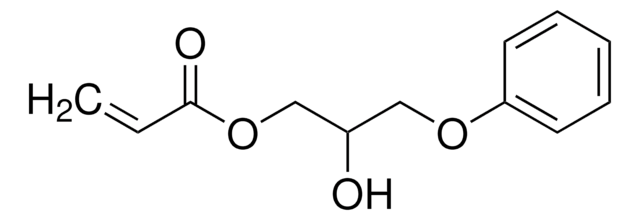292818
2-Hydroxyethylacrylat
96%, contains 200-650 ppm monomethyl ether hydroquinone as inhibitor
Synonym(e):
Ethylenglycolmonoacrylat
About This Item
Empfohlene Produkte
Dampfdichte
>1 (vs air)
Dampfdruck
<0.1 mmHg ( 20 °C)
Assay
96%
Form
solid
Enthält
200-650 ppm monomethyl ether hydroquinone as inhibitor
Brechungsindex
n20/D 1.45 (lit.)
bp
90-92 °C/12 mmHg (lit.)
Dichte
1.011 g/mL at 25 °C (lit.)
Lagertemp.
2-8°C
SMILES String
OCCOC(=O)C=C
InChI
1S/C5H8O3/c1-2-5(7)8-4-3-6/h2,6H,1,3-4H2
InChIKey
OMIGHNLMNHATMP-UHFFFAOYSA-N
Suchen Sie nach ähnlichen Produkten? Aufrufen Leitfaden zum Produktvergleich
Allgemeine Beschreibung
Anwendung
Signalwort
Danger
H-Sätze
Gefahreneinstufungen
Acute Tox. 3 Dermal - Acute Tox. 4 Oral - Aquatic Acute 1 - Aquatic Chronic 3 - Eye Dam. 1 - Skin Corr. 1B - Skin Sens. 1
Lagerklassenschlüssel
6.1A - Combustible acute toxic Cat. 1 and 2 / very toxic hazardous materials
WGK
WGK 3
Flammpunkt (°F)
213.8 °F - closed cup
Flammpunkt (°C)
101 °C - closed cup
Persönliche Schutzausrüstung
Faceshields, Gloves, Goggles, type ABEK (EN14387) respirator filter
Analysenzertifikate (COA)
Suchen Sie nach Analysenzertifikate (COA), indem Sie die Lot-/Chargennummer des Produkts eingeben. Lot- und Chargennummern sind auf dem Produktetikett hinter den Wörtern ‘Lot’ oder ‘Batch’ (Lot oder Charge) zu finden.
Besitzen Sie dieses Produkt bereits?
In der Dokumentenbibliothek finden Sie die Dokumentation zu den Produkten, die Sie kürzlich erworben haben.
Kunden haben sich ebenfalls angesehen
Artikel
The manufacture of monomers for use in ophthalmic applications is driven by the need for higher purity, improved reliability of manufacturing supply, but ultimately by the need for the increased comfort, convenience, and safety of contact lens wearers. Daily wear contact lenses have the potential to fill this need for many customers; however, their widespread use is constrained by higher costs compared to weekly- or monthly-based lenses. New approaches that improve cost structure and result in higher quality raw materials are needed to help make contact lenses more affordable and accelerate growth of the contact lens market.
Unser Team von Wissenschaftlern verfügt über Erfahrung in allen Forschungsbereichen einschließlich Life Science, Materialwissenschaften, chemischer Synthese, Chromatographie, Analytik und vielen mehr..
Setzen Sie sich mit dem technischen Dienst in Verbindung.